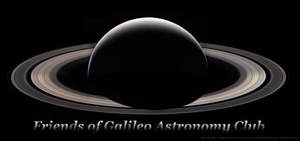FOG Blog
|
Sky Report by Ted Gruber
Evening Sky Venus (magnitude -4.0) is clearly visible in the early evening west-southwest sky and appears a little higher above the horizon with each passing night. This means the bright planet sets a few minutes later each night – around 8:00pm in mid-January, and just past 9:00pm in mid-February. Venus is the brightest object in the night sky other than the moon. The early evening of January 27 presents two special celestial treats. A crescent moon appears just south (to the left) of Venus that evening. And if you have binoculars or a telescope (and clear skies), you might be able to see distant Neptune, which will look like a faint blue star, immediately west of Venus. This is the closest apparent approach of the two planets since 1984. Although Mercury returns to the evening sky the last week of January, early February offers the best evening viewing of the innermost planet this year. Look for Mercury low to the west-southwest horizon as the sky darkens after sunset. Mercury sets about 75 minutes after sunset on February 1, and about 90 minutes after sunset by mid-February. Each evening, Mercury becomes slightly dimmer (magnitude -1.0 on February 1; 0.6 on February 15), but it appears higher in the sky each evening through February 10, which should make it easier to locate. Morning Sky Mars (magnitude 1.1), Jupiter (-2.0), and Saturn (0.7) return to the morning sky in January. Reddish Mars rises in the southeast first, around 4:30am. It might be easy to mistake the red giant star Antares for Mars because of their proximity and similar color. However, Antares rises about 30 minutes before Mars, so it will appear higher in the sky. Antares is also slightly dimmer (magnitude 1.06) than Mars. Jupiter, the brightest of the planetary trio, rises next. The giant planet rises just before 7:00am in mid-January and about three minutes earlier each morning over the next month. Saturn rises about 30 minutes before sunrise in late January, but it will be difficult to find against the brightening sky. Better chances to see Saturn begin in early February, when the ringed planet rises 60 to 80 minutes before sunrise. Moon Phases Last (1/17), new (1/24), first (2/1), full (2/9), last (2/15), new (2/23).
0 Comments
Your comment will be posted after it is approved.
Leave a Reply. |
Friends of Galileo
We are astronomy enthusiasts who love to learn and to share our wonder at the amazing sights right overhead. Archives
February 2024
Categories
All
|

 RSS Feed
RSS Feed